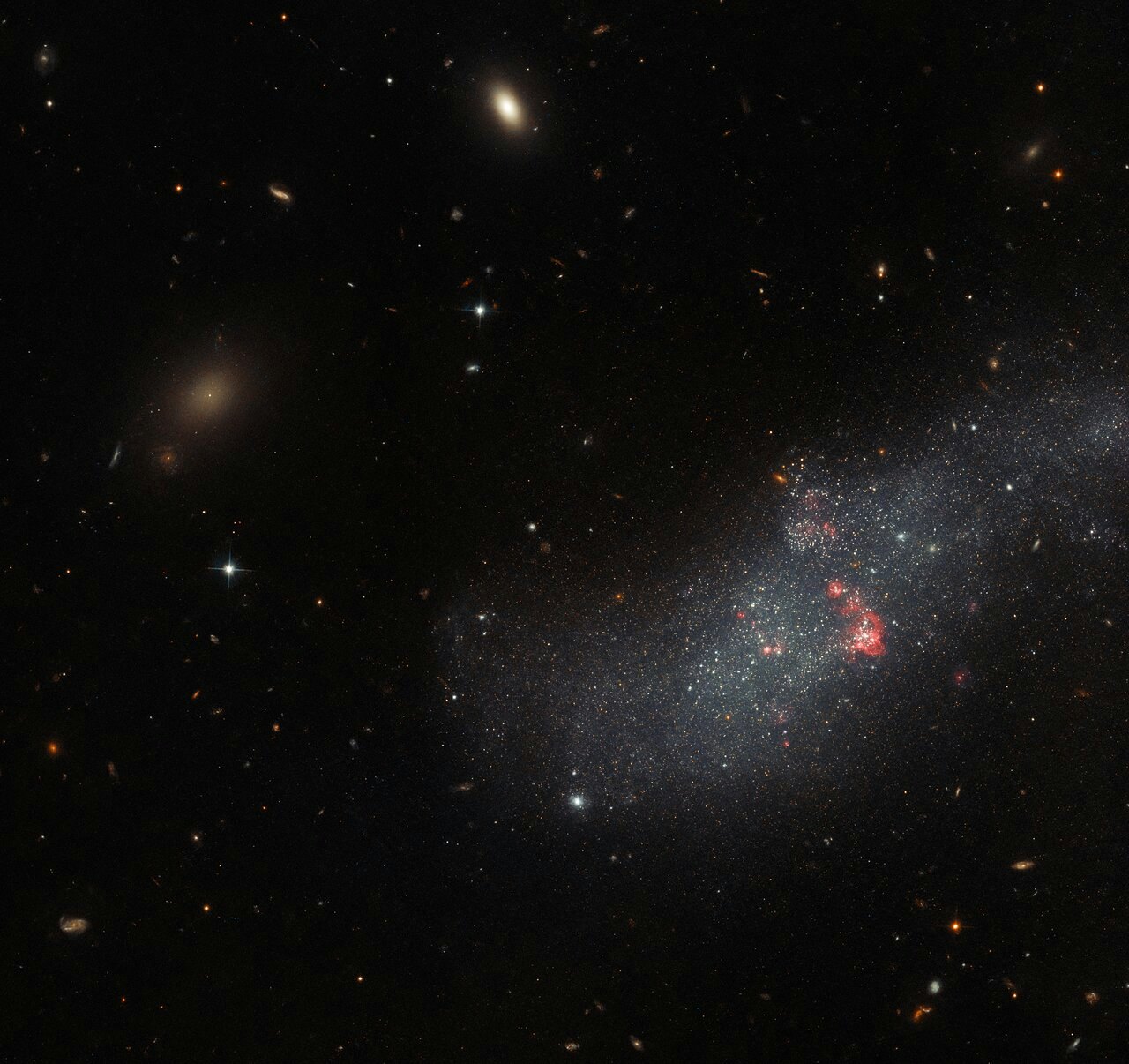
Dwarf galaxy UGCA 307 is small and disorganized, but it’s doing its best – and that’s a Monday vibe if ever there was one.
The little galaxy, about 26 million light years away, isn’t an intricate spiral or even a tidy ellipse. It’s just a hazy streak of stars with no shape or structure. But UGCA 307 proves you don’t have to have your stuff together in order to shine. In the heart of the dwarf galaxy, new stars flare to life amid enormous bubbles of hot gas (which show up in red in this Hubble Space Telescope image).

Just as the Large Magellanic Cloud orbits our Milky Way Galaxy, the dwarf galaxy UGCA 307 orbits the much larger, much better-organized (and very smug about it) Sombrero Galaxy, according to a 2020 study.
Together, UGCA 307 and the Sombrero are part of a group of galaxies on the southern edge of the Virgo Supercluster (if a group of galaxies is a cluster, then a group of galaxy clusters is a supercluster; gravity seems to draw galaxies into huge clusters and filaments, which form the large-scale structure of the universe). Our Local Group of galaxies, including the Milky Way and Andromeda, are also part of the Virgo Supercluster.
Astronomers want to see all of our nearest galactic neighbors in enough detail to at least identify each galaxy’s brightest stars and get a general sense of what sorts of stars each galaxy contains: some galaxies tend toward older stars, while others have younger populations, for instance. So far, we’ve gotten to know about three-quarters of our neighbors fairly well. Using snippets of time between Hubble’s scheduled observations of other objects in space, astronomers are filling in the gaps.
The image you see here was captured with a 21-year-old instrument, the Advanced Camera for Surveys, which astronauts installed on Hubble in 2002 during a servicing mission. Because Hubble is in what’s called low-Earth orbit (it circles the planet about 85 miles higher than the International Space Station), crewed Space Shuttle flights could make repairs or upgrade Hubble’s instruments. Without the Space Shuttle fleet, however, that’s no longer possible, and Hubble’s last service flight was in May 2009. For the rest of its lifetime, the venerable space telescope is as much on its own as the much more distant James Webb Space Telescope.







